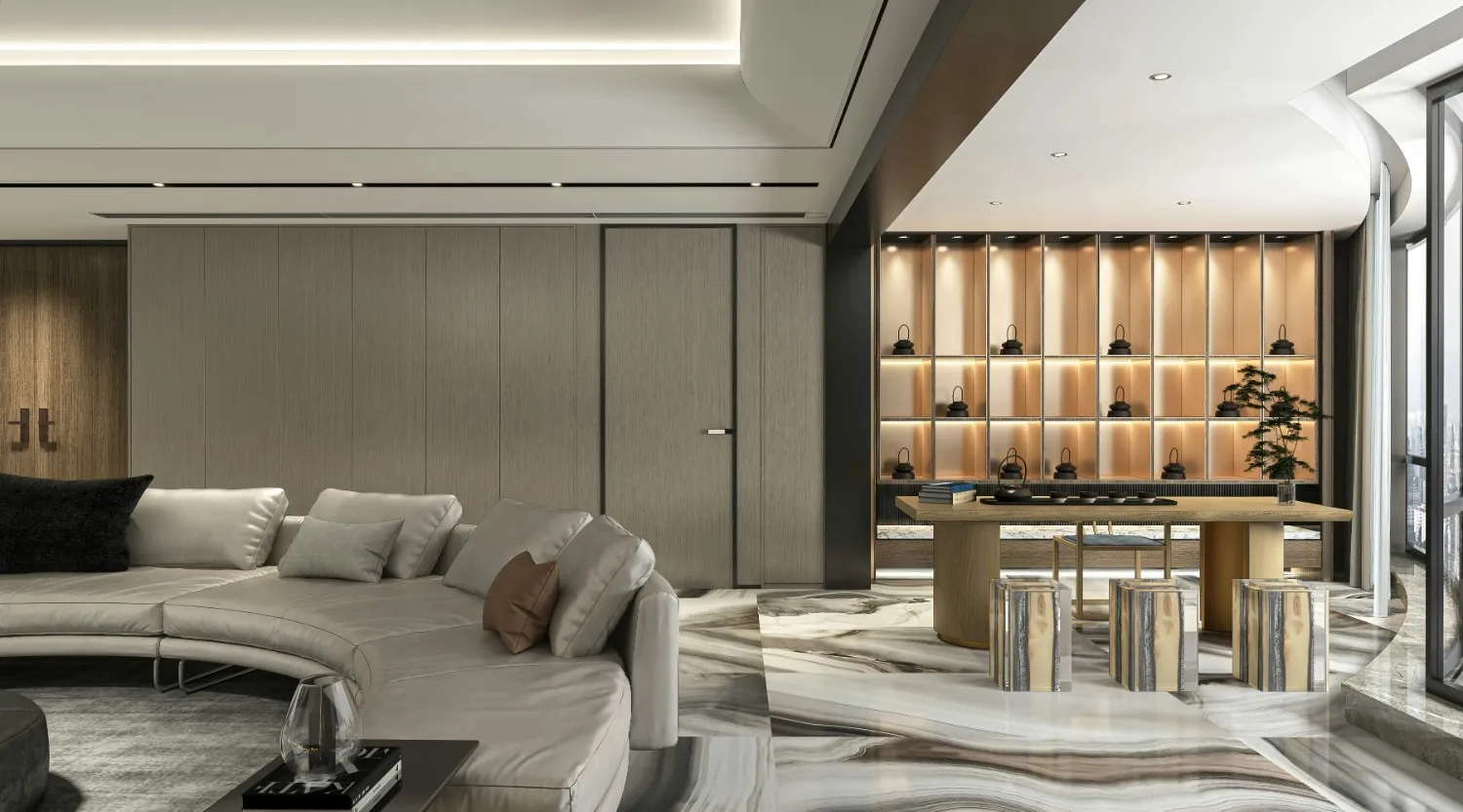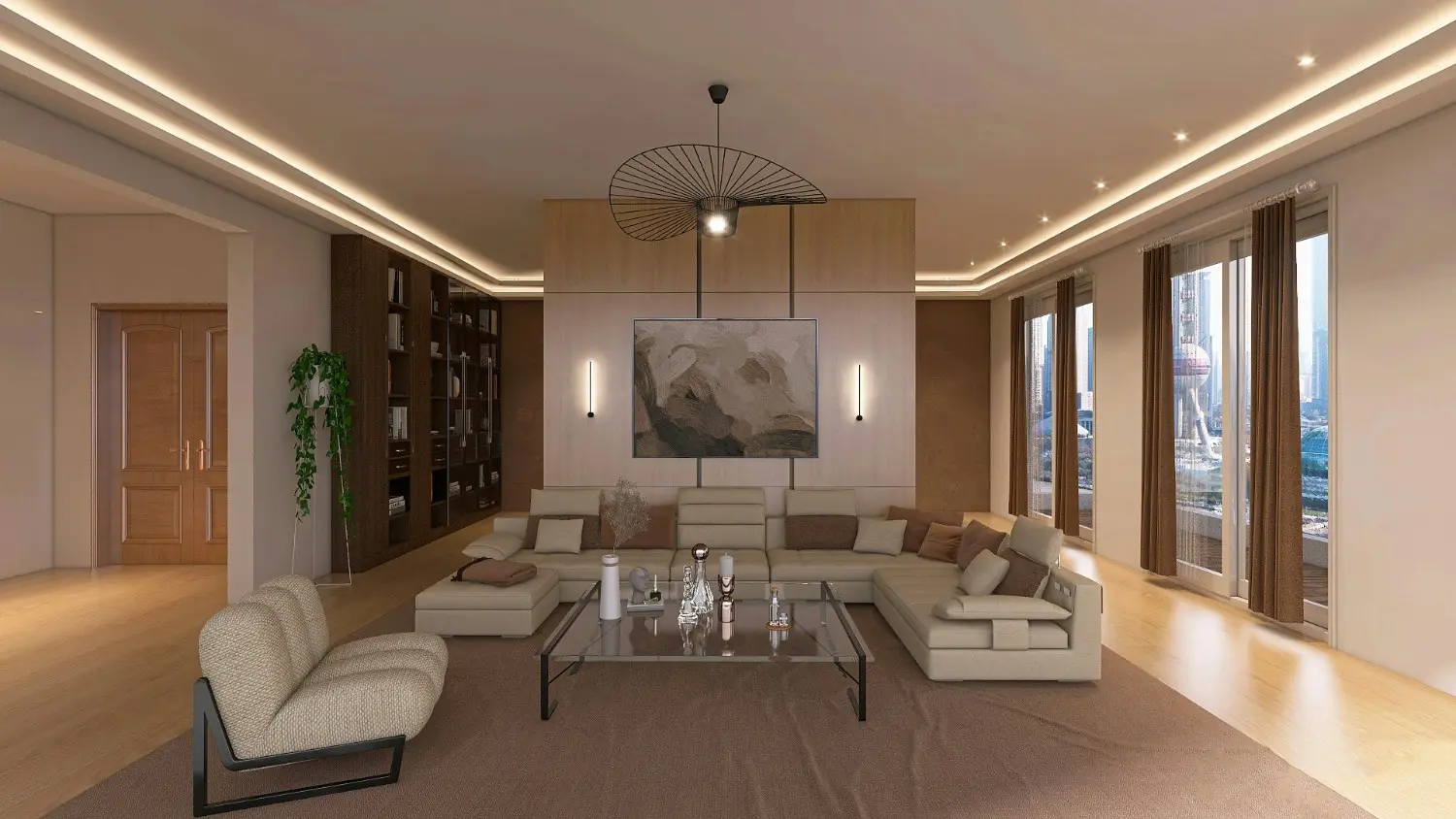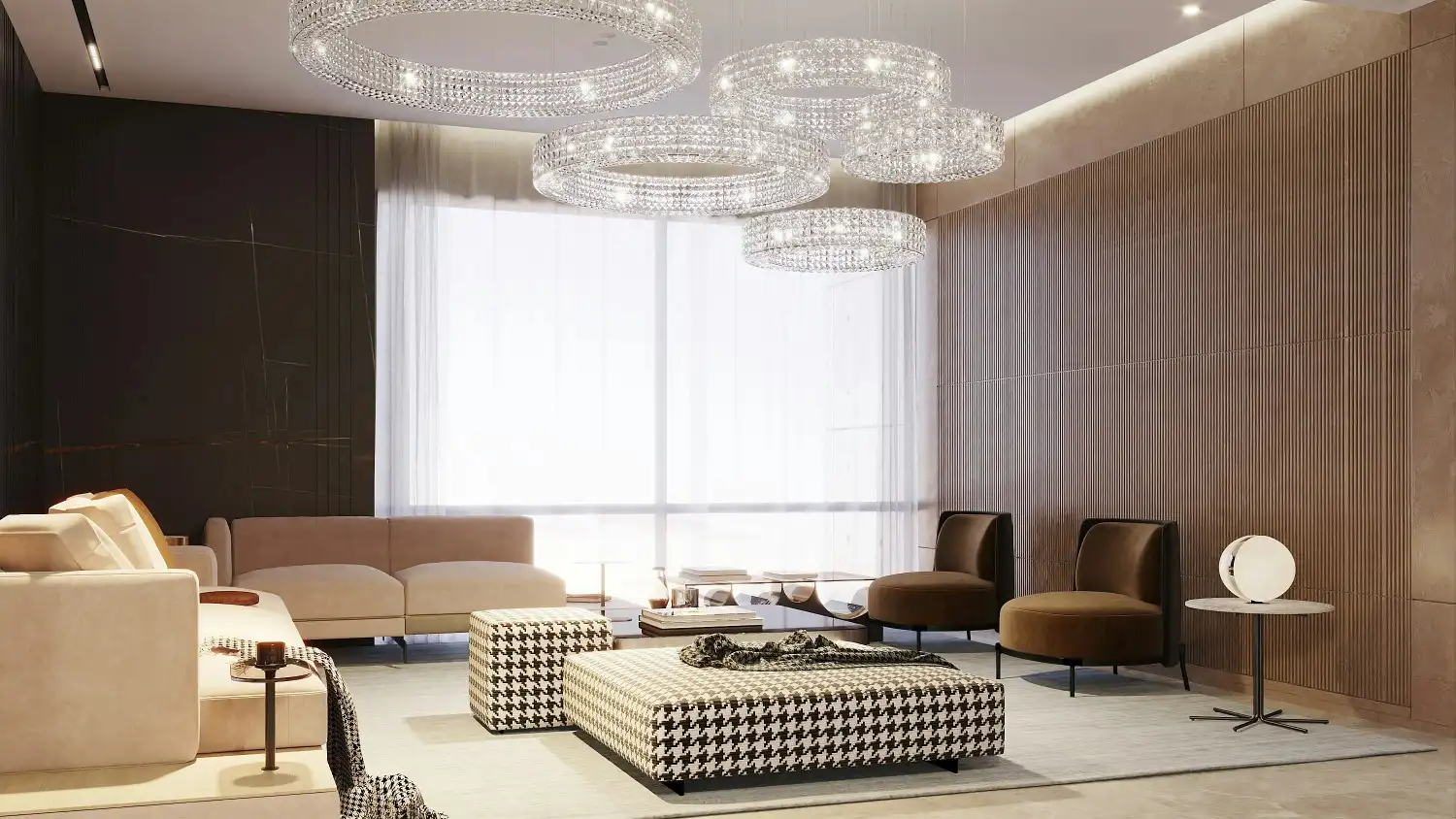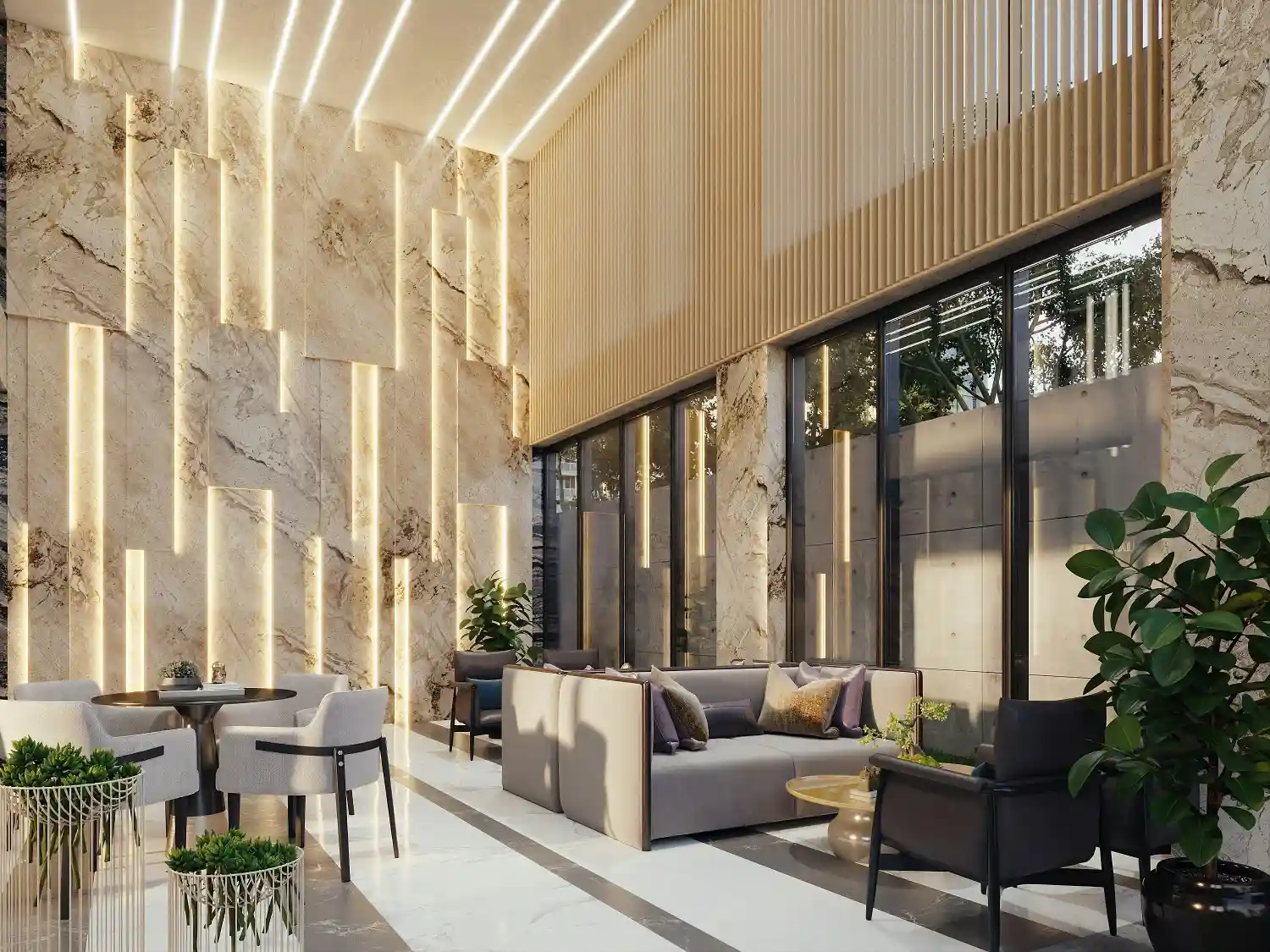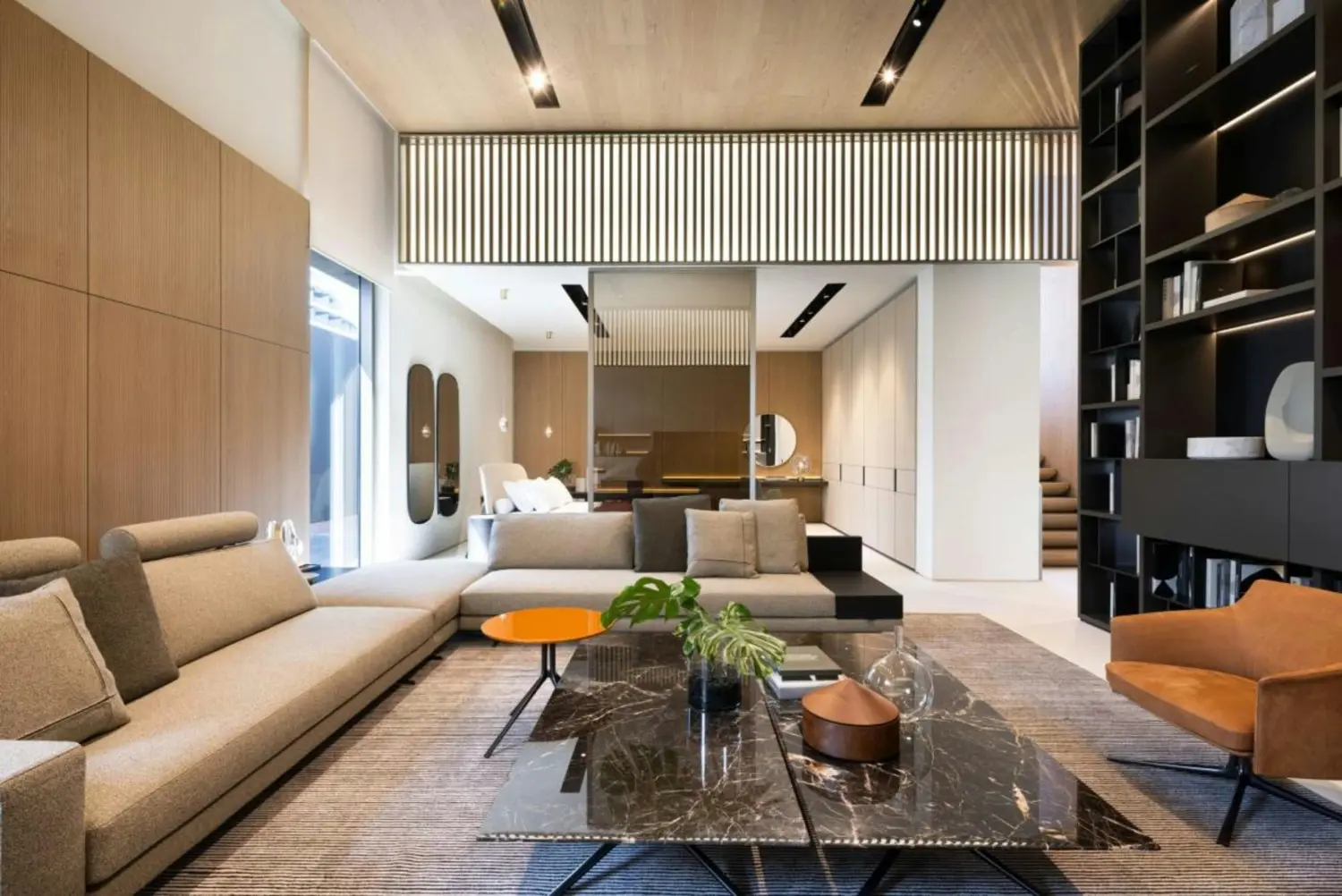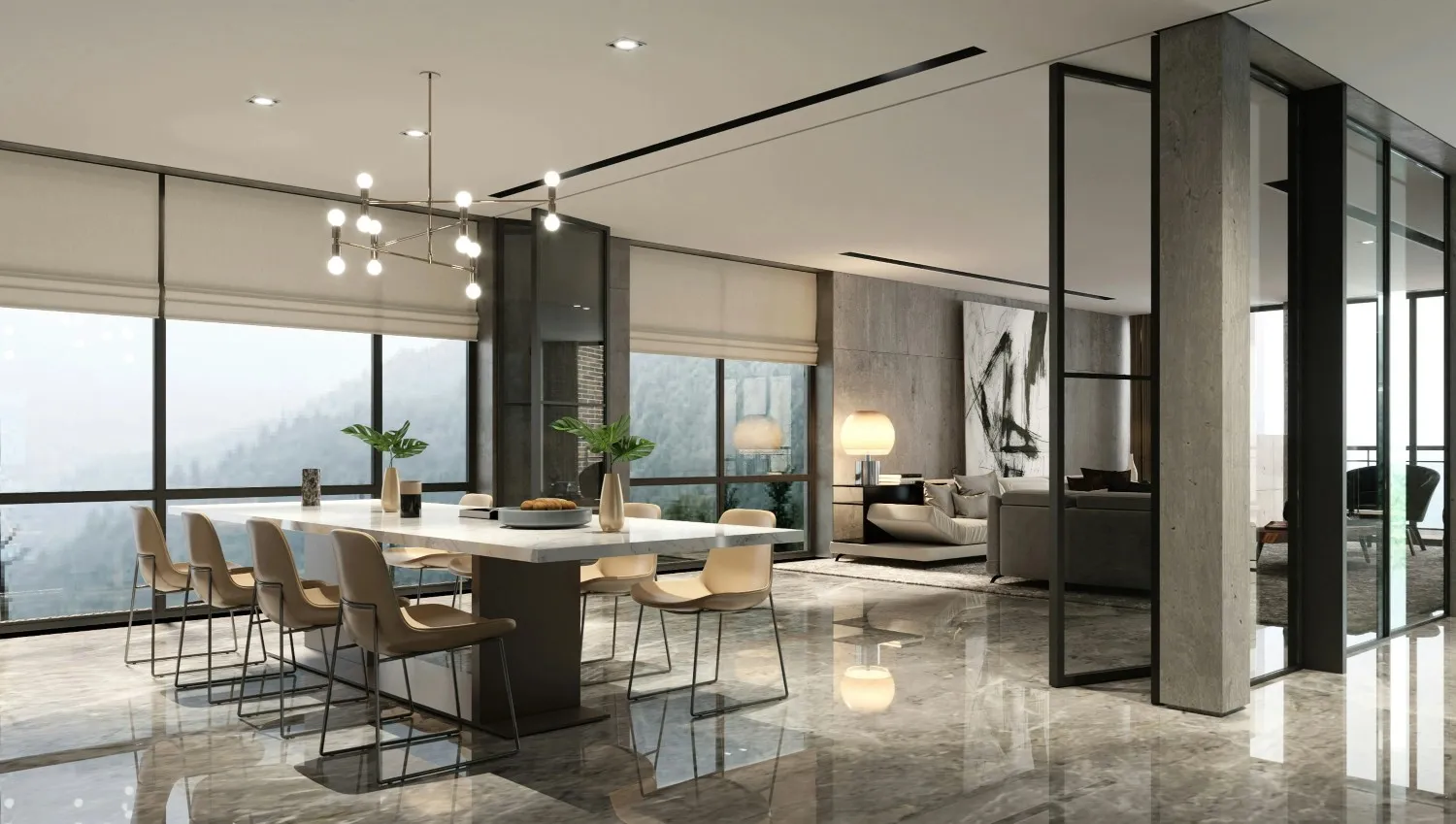A well-designed restaurant does more than feed people, it creates memories. The right restaurant interior design draws customers in, sets the tone for their experience, and keeps them coming back. This guide by Ark & Mason explores how thoughtful design turns ordinary dining spaces into lasting impressions.
Highlights
- First impressions often decide if guests step inside.
- Comfort, lighting, and flow drive how long people stay.
- Design details double as free marketing in the age of Instagram.
How Smart Design Drives Restaurant Success
The best restaurants don’t just serve good food, they make people feel good. A recent survey by Technomic revealed that 91% of diners say ambiance affects their decision to return. That alone shows how design directly ties into business success.
A smart layout keeps staff moving smoothly, reduces wait times, and makes guests feel comfortable. When people enjoy being in your space, they stay longer and spend more. Research shows that slower background music encourages diners to linger and order more, while faster or louder music makes them finish their meals and leave sooner. Even lighting, color, and music subtly influence what customers order and how much they consume.
Strong design also generates attention outside your walls. A single photo-worthy corner can reach thousands of potential diners online. Think of how many restaurants built their brand on social media presence alone. That’s the power of design, it markets for you.
See more: Top 10 Chipotle Restaurant Interior Design Features That Stand Out
10 Best Restaurant Interior Design Ideas That Attract Customers
A restaurant’s atmosphere shapes the entire dining experience. These restaurant interior design ideas combine style and strategy to help you create a space guests love walking into and never want to leave.
1. Flexible Layouts & Varied Seating
Guests have different needs. Some want privacy; others prefer open energy. Combining booth seating with communal tables or window nooks gives customers choice. A thoughtful layout also helps servers move quickly without disturbing diners.
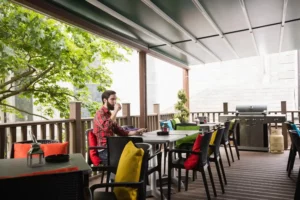
Restaurants that adapt spaces for groups, couples, or solo visitors create inclusivity that feels natural. Clear pathways keep things flowing while maximizing usable square footage.
2. Lighting That Shapes Mood
Lighting dictates atmosphere more than furniture ever could. Layer your light sources, ambient for general glow, task for functionality, and accent for drama.
Warm tones (around 2700–3000K) invite comfort and connection. Add dimmers to shift the vibe from daytime lunch to evening dinner. A chandelier or pendant cluster can also act as the visual centerpiece of the room, drawing the eye and defining your theme.
3. Natural Materials & Biophilic Touches
People instinctively relax around natural textures. Wood, stone, rattan, or exposed brick bring a tactile warmth that manmade materials can’t replicate.
Add greenery, potted plants, hanging vines, or even a small living wall, to soften lines and improve air quality. These touches connect guests to nature and subtly promote calm.
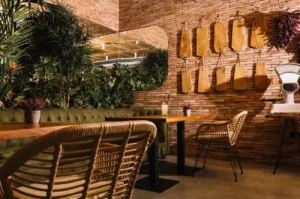
Many restaurants Ark & Mason designed, such as Hai Phong in Vancouver, use natural finishes and light to create that sense of openness and authenticity.
4. Open Kitchens & Chef Interaction
Transparency builds trust. Let guests peek into the process through a glass partition or semi-open counter. The rhythm of chefs at work adds energy and movement to the space.
Beyond entertainment, it communicates freshness and confidence. Guests feel part of the story when they can see their meal come to life.
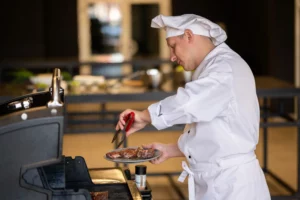
Ark & Mason’s commercial interior design team often incorporates open-kitchen concepts that strike the right balance between spectacle and sanitation.
5. Acoustic Comfort
A beautiful restaurant that’s too loud loses its charm. Sound shapes how people perceive service quality and relaxation. Noise consistently ranks as diners’ top complaint. According to Zagat’s Dining Trends Survey, it’s the most common issue customers mention, and studies of New York City restaurants found average noise levels around 77 decibels, with one in four places reaching over 81 decibels.
Use acoustic panels, ceiling baffles, or even soft materials like drapes and cushioned seats to absorb excess noise. Proper spacing between tables helps keep conversations private and the atmosphere intimate.
Designing for sound is part of Ark & Mason’s building code compliance process to ensure safety and comfort coexist.
6. Instagram-Worthy Details
A unique focal point can turn a casual meal into a viral post. Murals, custom signage, neon quotes, or patterned tile floors create those ‘pause-and-post’ moments. Among people aged 25 to 34, about 27% say they use Instagram to discover new restaurants, showing how a visually appealing space can become free marketing on its own.
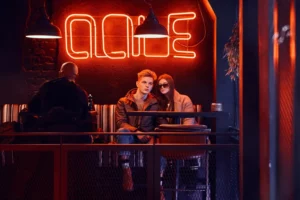
Even a single color pop, pink chairs, brass mirrors, or geometric lighting, can become your brand’s visual signature. The trick is subtle consistency. Every corner should reflect your identity without looking staged.
7. Branding Through Small Touches
Great branding hides in plain sight. Custom napkins, embossed menus, and engraved glassware tell your story without saying a word.
Textures and materials also reinforce who you are. A rustic wood table signals casual comfort; marble and gold accents hint at fine dining. These micro-details make your restaurant feel intentional, not accidental.
8. Sustainable Design Choices
Sustainability isn’t a trend, it’s a responsibility. Using reclaimed wood, recycled tiles, and low-VOC paints reduces environmental footprint while adding depth to your design story.
LED lighting and smart energy systems also cut operating costs long-term. Durable surfaces like quartz or terrazzo minimize replacement cycles, saving money and resources.
9. Play with Colors & Textures
Color psychology plays a quiet but steady role. Warm reds and oranges stimulate appetite. Soft greens and earth tones calm the senses.
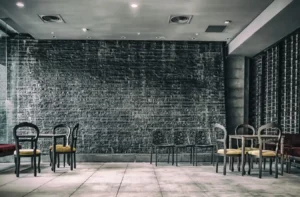
Textures add the finishing touch, matte walls, velvet seating, raw wood grain, all create tactile interest. The right balance keeps a restaurant feeling rich but not overwhelming.
10. Cultural Heritage and Authenticity
Customers appreciate spaces that reflect roots and authenticity. Incorporating local art, handmade ceramics, or patterns inspired by heritage crafts connects emotionally with your audience.
This doesn’t mean copying traditions, it’s about interpretation. Use materials, stories, or motifs that align with your cuisine and culture. A restaurant that feels true to its story always resonates deeper.
Tips for Implementation
Before sourcing furniture or paint, define your restaurant’s story. Who are your guests? What emotion should the space evoke? Once that’s clear, every decision, from layout to lighting, should serve that narrative.
Work with local artisans whenever possible. Handcrafted tiles, lighting fixtures, or signage often cost less than imported alternatives and add character impossible to replicate.
Always test layouts and lighting in real conditions. What looks great on a plan might feel crowded or too dim in person. Small mockups or 3D renderings help avoid surprises, something Ark & Mason handles in its 3D rendering services.
How Ark & Mason Helps Shape Restaurants That Customers Love
At Ark & Mason, restaurant success starts with design that performs as beautifully as it looks. By combining commercial interior design and construction management under one roof, every project moves smoothly from concept to completion, with fewer handoffs and faster results.
Their proven three-step process keeps projects cohesive:
- Consultation: Define your concept, target audience, and layout strategy.
- Design Development: Create detailed plans and 3D visuals that eliminate guesswork.
- Construction Management: Handle permits, trades, and installations for on-time delivery.
A standout example is Hai Phong Restaurant in Vancouver, where clean lines, warm lighting, and authentic cultural details turned the space into a local favorite. Owner Cindy Chau praised the team for “breathing new life” into her restaurant with “outstanding” results.
Clients like DibFit Cycle and Physiolab also note Ark & Mason’s clear communication, precision, and reliability, proof that thoughtful design and disciplined execution can turn any restaurant vision into a space customers truly love.
FAQs: Restaurant Interior Design
1. What colors work best in restaurant interior design?
Warm earth tones, muted greens, or jewel hues create comfort and appetite. The right color palette depends on your brand and cuisine.
2. How can small restaurants make the most of limited space?
Use built-in seating, foldable tables, and vertical storage. Mirrors can visually double the space without adding square footage.
3. Do open kitchens really improve the dining experience?
Yes. They add transparency, energy, and entertainment. Guests enjoy watching the culinary craft unfold.
4. How can restaurant design influence customer behavior?
Lighting, acoustics, and seating arrangement subtly guide how long guests stay and how much they order.
5. What are the latest trends in restaurant interior design?
Natural materials, sustainable finishes, and locally inspired elements are leading the way in 2025.
See more: 10 Best Commercial Interior Design Ideas for Modern Businesses
Conclusion
A thoughtful restaurant interior design isn’t just decoration, it’s strategy. It affects how people feel, interact, and remember your brand. Every chair, light, and texture should express your story.
If you’re ready to create a space that attracts, delights, and endures, reach out to Ark & Mason. Our team brings creativity and precision together from concept to completion. Contact us and Start your project today.

